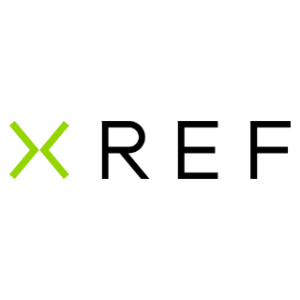Top Employee Recognition Tips
Competition for top talent is fierce, and your newly trained and highly skilled workers are constantly being poached by recruiters and other organizations. To cultivate a strong workplace culture and foster employee engagement, you need to recognize your employees’ contributions in a way that makes them feel genuinely appreciated.
Why recognize?
Every time one of us succeeds at something — anything — our nerve cells release a chemical called
dopamine which stimulates the reward centre of our brain. It feels good! When you recognize a peer, it produces a double-dopamine rush: doing the behaviour feels great — and being recognized for it does, too.
People talk about wanting to create a culture of recognition but just launching an employee recognition program does not achieve that goal. “If you build it, they will come.”

Recognition goals
Developing goals and objectives that clearly define the expected outcomes is the first step in launching any new initiative.
The same applies when you are trying to launch an employee recognition program with the added incentive of increased organizational performance.
Taking the time required to clearly define and communicate your goals and objectives is a strategic imperative if you want to successfully implement your recognition program. Set goals:
• To support you in a successful launch of your recognition program
• To engage employees with a call to action to log on, send a recognition, and read communication
• To keep a simple and consistent experience across locations
• To create an engaging experience that’s scalable but memorable
Effective recognition programs can transform companies. Following these 13 employee recognition best practices will make sure you will get the most out of your recognition program:
1. Engage managers.
Managers play a huge role in any recognition program. Their support and adoption of the program will ultimately determine its success (or failure). Managers are the ones who give recognition to employees and they’re the ones who will make your program memorable, passable…or forgettable.
Make it a top priority to train managers upon the program launch or when any program updates are made so they understand the importance of recognition and how best to give it. Give them access to resources they can reference when they need them and make sure there are ongoing communications to keep the program top of mind.
2. Be relevant.
Today’s employees are on their phones whenever they have a break. They’re checking in, catching up, and staying connected to the latest news, emails, weather, pictures, videos, and social statuses. Employees are using their phones to connect whenever, wherever, and however, they want to.
Magnify recognition by incorporating mobile and social components that your employees are familiar with using. When recognizing above and beyond behaviour, include a social feed to provide company-wide visibility into culture and values in action. A responsive web design or a recognition app lets employees view their recognition and redeem for an award on any device they use, whenever they want to.
3. Make it personal.
You’re more than just an employee: you’re part of a family, a friend, a volunteer… and you have a lot of achievements and milestones outside of work. Managing all of those aspects of life can often be challenging.
Using recognition to celebrate your peers’ personal milestones lets them know that you see them as real people; that you appreciate who they are and the other events they have in their lives.
Birthdays, anniversaries, new babies, first home, earning a degree… there are many personal milestones that deserve recognition. Have a little fun writing a congratulatory note or finding an appropriate image to personalize your message.
4. Tie recognition to company values.
A recognition program should be created with purpose and be aligned with core values, clear targets, and should reinforce certain behaviours. Reinforce that not only are your employees doing good work, but they’re doing it in a way that supports the culture of your organization.
5. Recognize the every day.
Not every day is going to be great. But if you show employees day-in and day-out the work they’re doing matters, it will become so much more than a job.
It’s important to surround your teams with a culture that drives enduring purpose and performance. When employees see a promising future that supports their professional goals and growth within your company, you win their loyalty. Their work experience becomes more meaningful and fulfilling—so they give more and stay longer.
6. Recognize early.
Most employee recognition programs don’t recognize tenure until an employee hits the five-year mark. But with the increase of Millennials in the workforce — who tend to job hop more than other generations (91 percent expect to stay in a job for less than three years) — it’s quickly becoming less common to make it to a five-year anniversary.
All this means going five years without any type of formal recognition for service is a really long time to wait — too long — and can be a contributing factor to employee churn.
Incorporate formal recognition earlier by including 1-year and 3-year milestones in your service anniversary program. Consider including informal recognition at the 3-month, 6-month and 9-month marks such as a manager giving an employee a handwritten card along with their favourite coffee drink.
7. Recognize frequently.
Recognize frequently to build momentum and enthusiasm. In a study of over 23,000 employees, BI WORLDWIDE found that a 10 percent reduction in turnover is seen between employees who are rarely recognized compared to those who are frequently recognized. In this analysis, rarely is defined as receiving 0-1 recognition per month and frequently is defined as receiving 3-4 recognitions per month.
8. Make recognition timely and specific.
Specific and timely recognition is the most effective way to acknowledge employees accomplishments. Recognition needs to happen in real-time. As soon as you see an employee going above and beyond, show them you noticed it. You also need to be specific about what you’re thanking them for.
9. Make it peer-to-peer.
Peer-to-peer recognition is a key component of a comprehensive recognition strategy.
Take a look at all of the “likes” on Facebook and Instagram and you’ll see just how hungry we are for the approval of our peers … and how much we enjoy both receiving — and giving — compliments.
Of course, a well-designed peer-to-peer initiative does more than create a collection of “you are so good at what you do” posts.
A whole lot more. By offering your employees a formal system through which they can recognize their colleagues for good work, you’ll sustain your culture of recognition through the years, generating employee behaviour change, satisfaction, and engagement.
10. Make recognition fun, fast, and easy.
When it comes to employee recognition, consistency matters. But let’s face it: As a great manager, you have a lot on your plate. When giving recognition is one more item on a long to-do list, it can get lost in the shuffle—despite even the best of intentions.
If you’re using an online recognition platform, you want your website to be easily accessible and user-friendly. Alternatively, you can use an employee recognition app which makes sending recognition to your coworker’s fun, fast, and easy.
With just a tap you can send recognition, add award points, include a video/photo, view public recognition, and contribute to service awards celebrations.
11. Make it rewarding.
While company-branded merchandise may be a nice fit for new employees, it shouldn’t be your go-to for employee awards. Your employees work hard for your company and are ambassadors for your brand but the award should be about them…not you.
Offer a collection of lifestyle awards culturally and demographically appropriate for employees in your organization. A meaningful award is something they’ll be excited to receive but may not buy for themselves. A designer handbag or a golf club is a nice reminder of their recognition and gives them a greater affinity to your organization each time they use it. Or offer hand-curated experiences or experiential rewards to your employees.
A study by Harris Group found that 72 percent of Millennials prefer to spend more money on experiences than on material things. According to Dr. Elizabeth Dunn, Professor of Psychology at the University of British Columbia (UBC), experiences—as fleeting as they may be—deliver more-lasting happiness than material things. Dr. Dunn attributes the temporary happiness achieved by buying things to what she calls “puddles of pleasure”.
12. Turn recognition into results.
To be successful, design your recognition program in a way that will correlate performance and contribution to recognition. For example, sometimes it’s not enough to reward only the sales team for selling more; supply chain, marketing, and administration are part of the process and need to be recognized for large-scale initiatives.
The forensic view of the results should look for evidence that managers who had high levels of recognition activity also drove the highest results through their teams. And were employees who gave and received high levels of recognition also likely to perform better in the individual aspects of the promotion?
13. Think (and act) globally.
With employees all around the world, it’s essential that their recognition experience is memorable and meaningful, no matter where they are. Partnering with a supplier that has a global presence and offers comprehensive programs will help you better reach and recognize your employees. Plus, it allows you to successfully address any cultural issues, while also avoiding expensive international shipping and duties.
Ask the right questions to make sure your program supplier has brick-and-mortar locations outside of Canada. That way, your employees will have access to culturally appropriate award selections and local customer service. A Canada-based supplier can easily ship awards across borders, but one with a true global footprint will save you shipping costs and provide locally relevant awards.
The takeaway?
Make a big deal of your employees’ accomplishments to ensure that the victories will be multiplied. Implementing a recognition program allows for large-scale celebrations of employee accomplishments, leading to even larger-scale victories: increased trust, camaraderie, loyalty, motivation, and highly engaged and inspired employees.
About the Author
Peadar Walsh is head of marketing and communications at BI WORLDWIDE Canada, a global leader in sales performance, employee inspiration, and employee rewards and recognition solutions.


